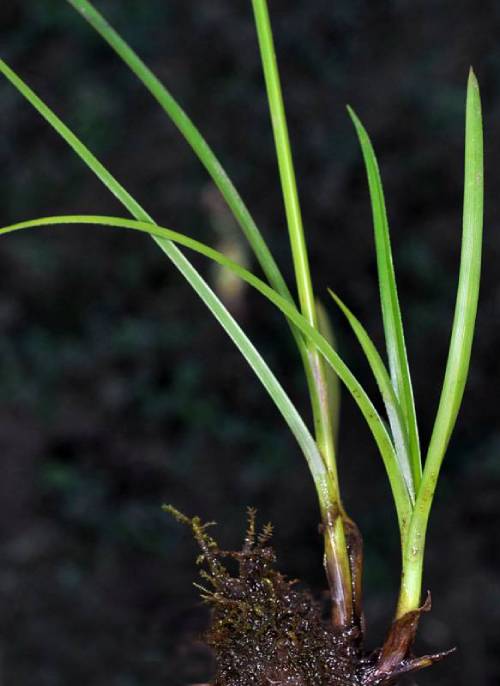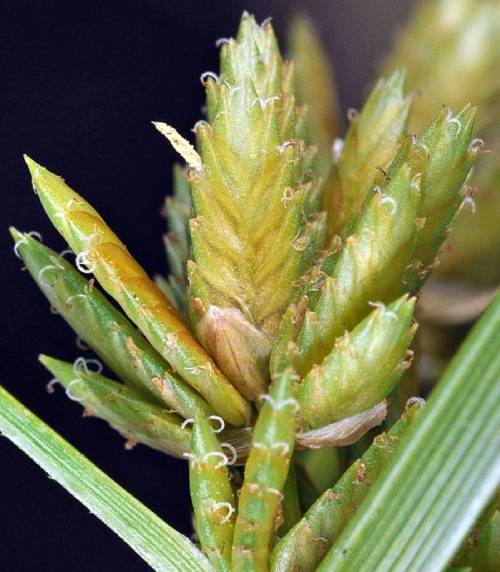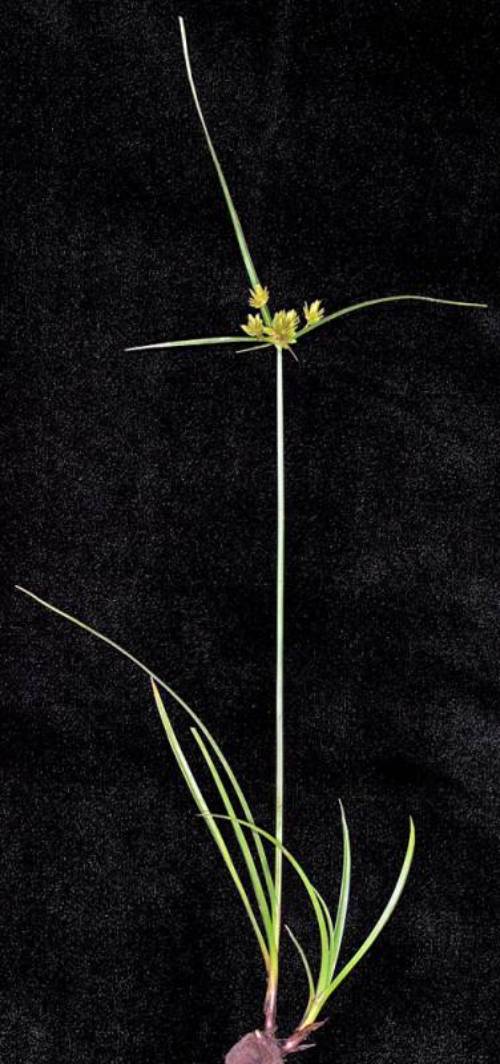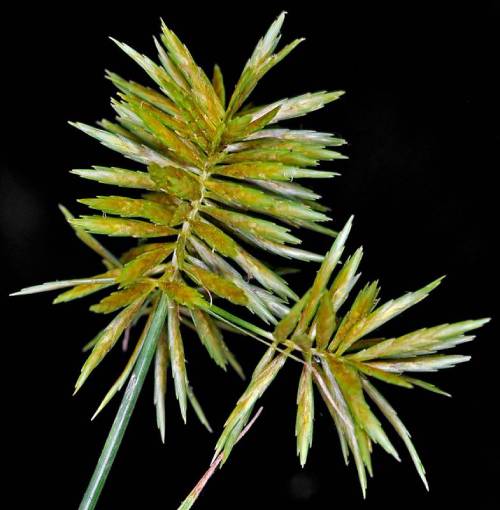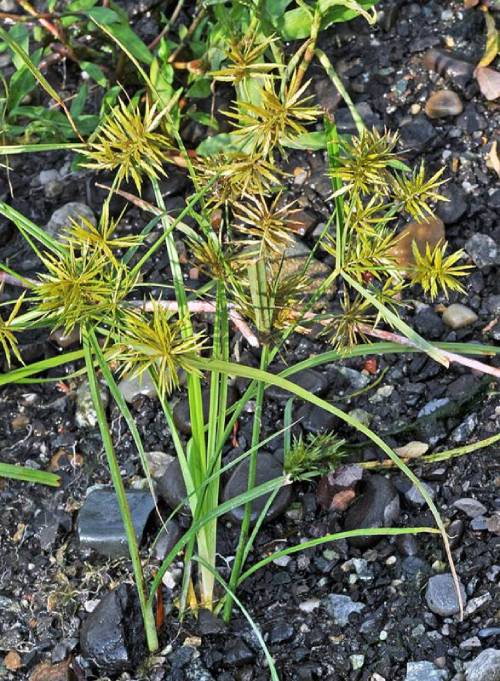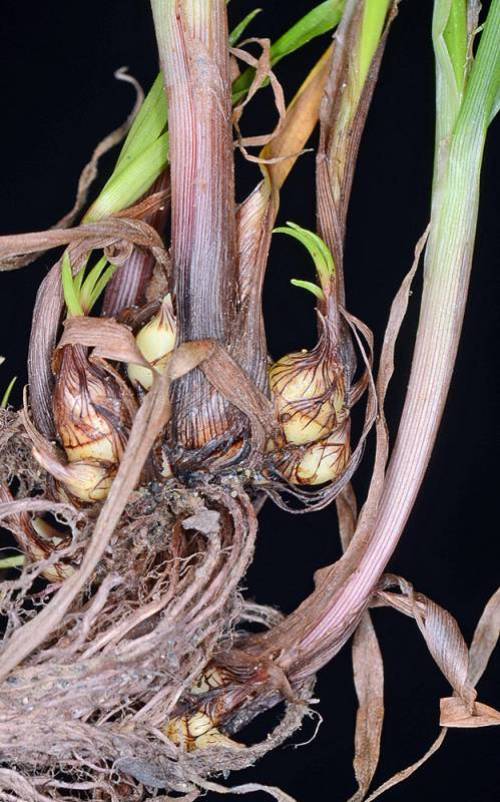Yellow nutsedge identification and control
Information about the noxious weed yellow nutsedge. Yellow nutsedge is also known by its scientific name, Cyperus esculentus.
About this weed
Yellow nutsedge is a regulated Class B noxious weed in King County. This means control is required in King County under the state noxious weed law.
Yellow nutsedge is known as Cyperus esculentus and it is in the sedge family, Cyperaceae. Other names include yellow nutgrass, chufa flatsedge, and earth-almond.
In parts of Europe, Africa, and Asia, yellow nutsedge’s close relative is known as ‘chufa’, and its edible tubers are used in the form of ground up flour and in other food products or additives. Some taxonomists treat yellow nutsedge and ‘chufa’ as the same species.
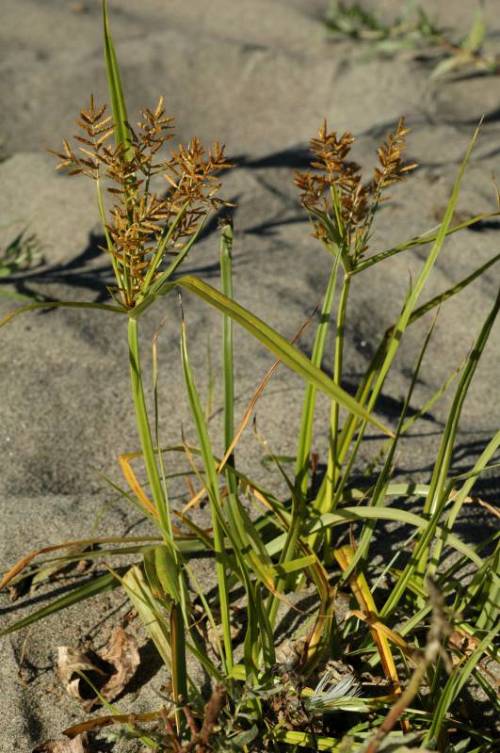
Why it's a problem
-
Yellow nutsedge is a fast-growing plant that is difficult to control once established. It can be found in both cultivated and uncultivated lands, thriving in both arid and shoreline conditions.
-
When introduced to crop fields, it is highly adaptable and often results in a lower crop yield due to resource competition.
-
Research suggests that this species may produce chemicals that are toxic to some crops.
Plant description
- Yellow nutsedge is a perennial (plants that have a 2+ year life cycle) sedge with glossy, triangular stems that reach 6-30 inches tall.
- It has narrow, grass-like leaves that mostly grow from the base and are as long as, or longer than, the stem.
- Straw-colored to golden brown seed heads are surrounded by a whorl of leaf-like bracts (modified leaf structures).
- This plant reproduces by seeds, rhizomes (spreading horizontal roots), basal buds at the base of its stem, or tubers (thickened underground part of a stem that stores nutrients, i.e., potato). Tubers are the main means of spread. A single plant can form several thousand tubers per season. Dormant nutlets (nut-like tubers) survive in soil through harsh winter conditions. Individual tubers contain numerous buds and can sprout several times before the food reserves are gone.
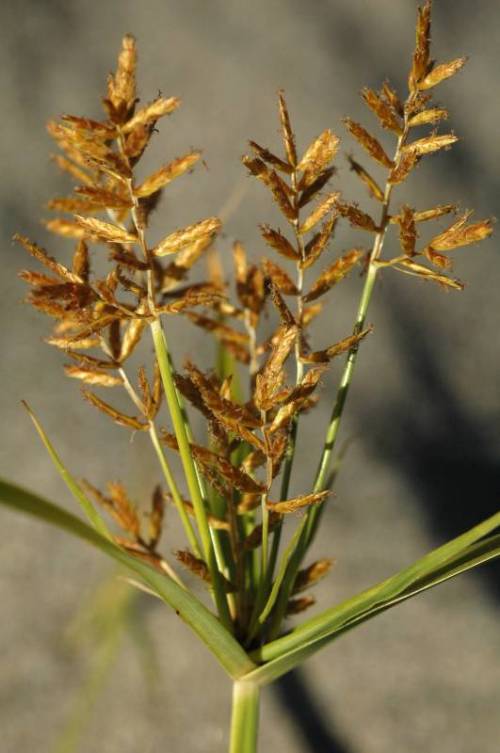
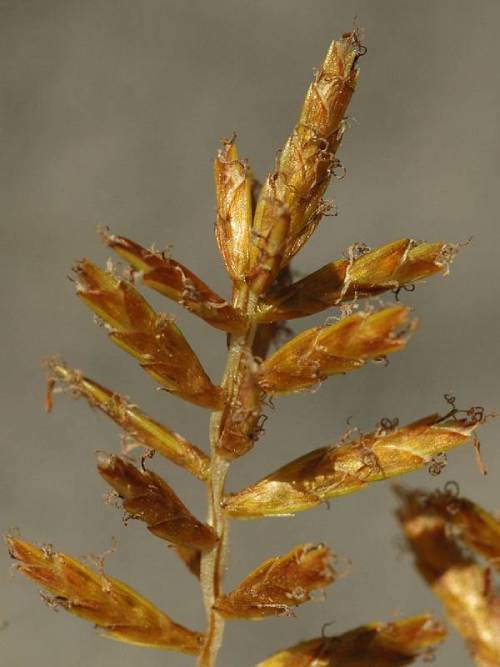
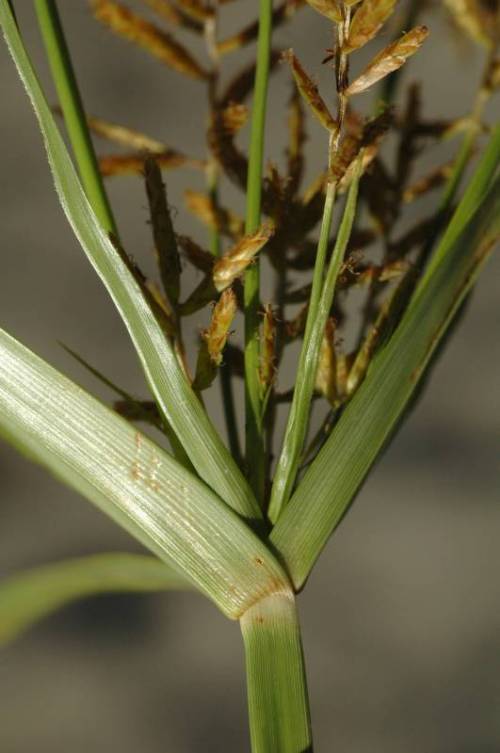
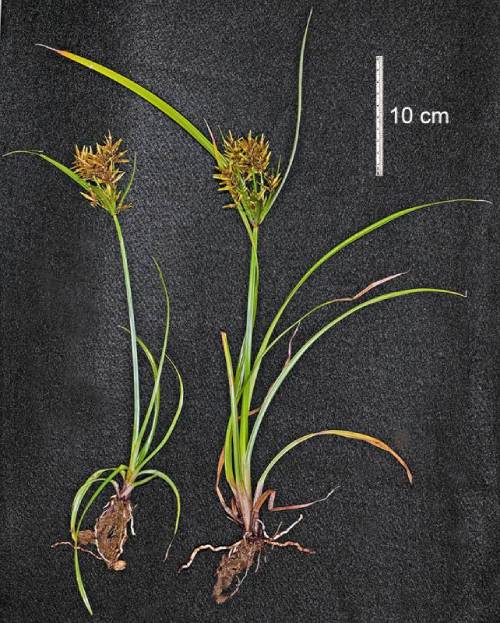
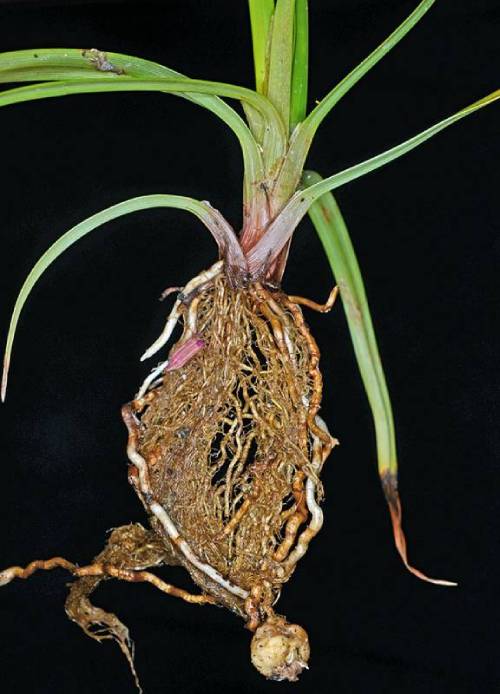
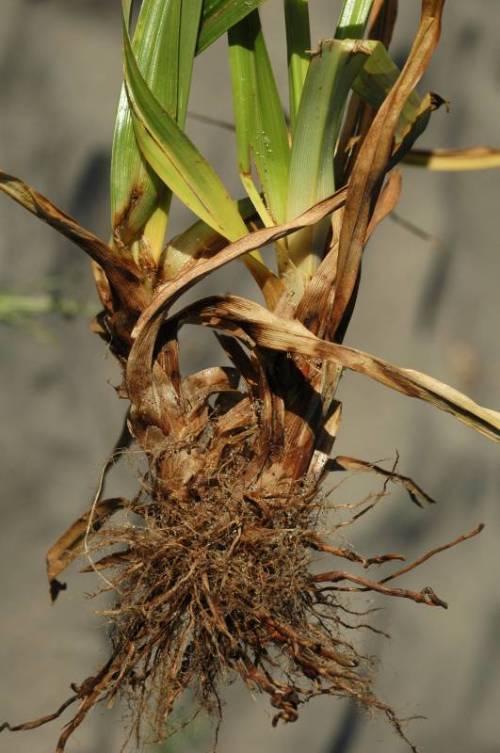
Beware of look-alike plants
Yellow nutsedge may be confused with many sedges and other grass like species, especially without flowers or tubers, but even with these parts present they may be confused with:
Tall flatsedge (Cyperus eragrostis), an introduced species that is on Washington state's monitor list.
False flatsedge (Cyperus strigosus), a native species.
See photos below for details on their differences.
Sedges and other grass like species, including yellow nutsedge, can be really challenging to identify down to a specific species. Plants likely can’t be identified without flowers or nut-like tubers. King County has several native, ornamental, and introduced sedge species in the sedge family that could be mistaken for yellow nutsedge. Contact our program if you have questions identifying and controlling this species.
When in doubt, take photos and report them on iNaturalist.
What to do if you find it
Property owners are required to control yellow nutsedge on lands that they manage. Please notify us if you see it growing in King County. Our program staff can provide the property owner or appropriate public agency with site-specific advice on how best to remove it. We map all known locations of regulated noxious weeds such as yellow nutsedge in order to help us and others locate new infestations in time to control them.
Control methods
We recommend using a combination of methods to control noxious weeds. In areas with few weeds, it is important to act quickly before they become harder to control. Once established, yellow nutsedge can be hard to control due to the high number of reproductive tubers (thickened underground part of a stem that stores nutrients, i.e., potato) each plant can produce. Make a long-term plan as it often takes several years to get rid of most weeds. Start in the least infested areas first and then move into more heavily infested areas.
Manual control
Small infestations can be controlled by hand-pulling or digging up the plants, being careful to remove as much of the roots as possible.
Mechanical control
Mowing isn’t effective because of its ability to spread by any remaining root segments. Repeated tilling at four-week intervals and drying out during the summer dry season can be effective at reducing, but not eliminating, infestations.
Cultural control
Plant hardy native plants or crops in combination/following other control methods to reduce yellow nutsedge's available resources. For smaller infestations, following thorough manual removal with a papery layer (cardboard or newspaper) and 6-12 inches of a heavy mulch will help discourage regrowth. But it's best to always plan for a few years of continual maintenance with any plants that can spread via fragments of themselves.
Chemical control
Stay safe when using herbicide:
- Always read the label before use.
- Wear a long-sleeved shirt, long pants, shoes, and eye protection.
- Follow state and local regulations.
Chemical control can effectively control infestations, though yellow nutsedge has shown some resistance to herbicides.
Avoid spraying where there is a chance that herbicide will enter a waterway or wetland unless you are using a state-approved aquatic herbicide and have the required permits and licenses to do so. Use of pesticides in water is regulated in Washington state. See Washington Department of Ecology Aquatic Pesticide Permits for details.
For more information, please refer to the PNW Weed Management Handbook for the most up to date and specific method for chemical control of yellow nutsedge.
Chemical control options may differ for private, commercial, and government agency users. For more information, or a site-specific recommendation in King County, contact the noxious weed program. For information in other locations, contact your local weed board or extension office.
Disposal instructions
Soil containing seeds and other reproductive root-fragments could easily spread yellow nutsedge from boots, tools, and other agricultural equipment. Plant parts should be disposed of in the trash, where possible, or care should be taken to not spread them off site.
Noxious Weed Disposal - Washington State Noxious Weed Control Board

 Translate
Translate
